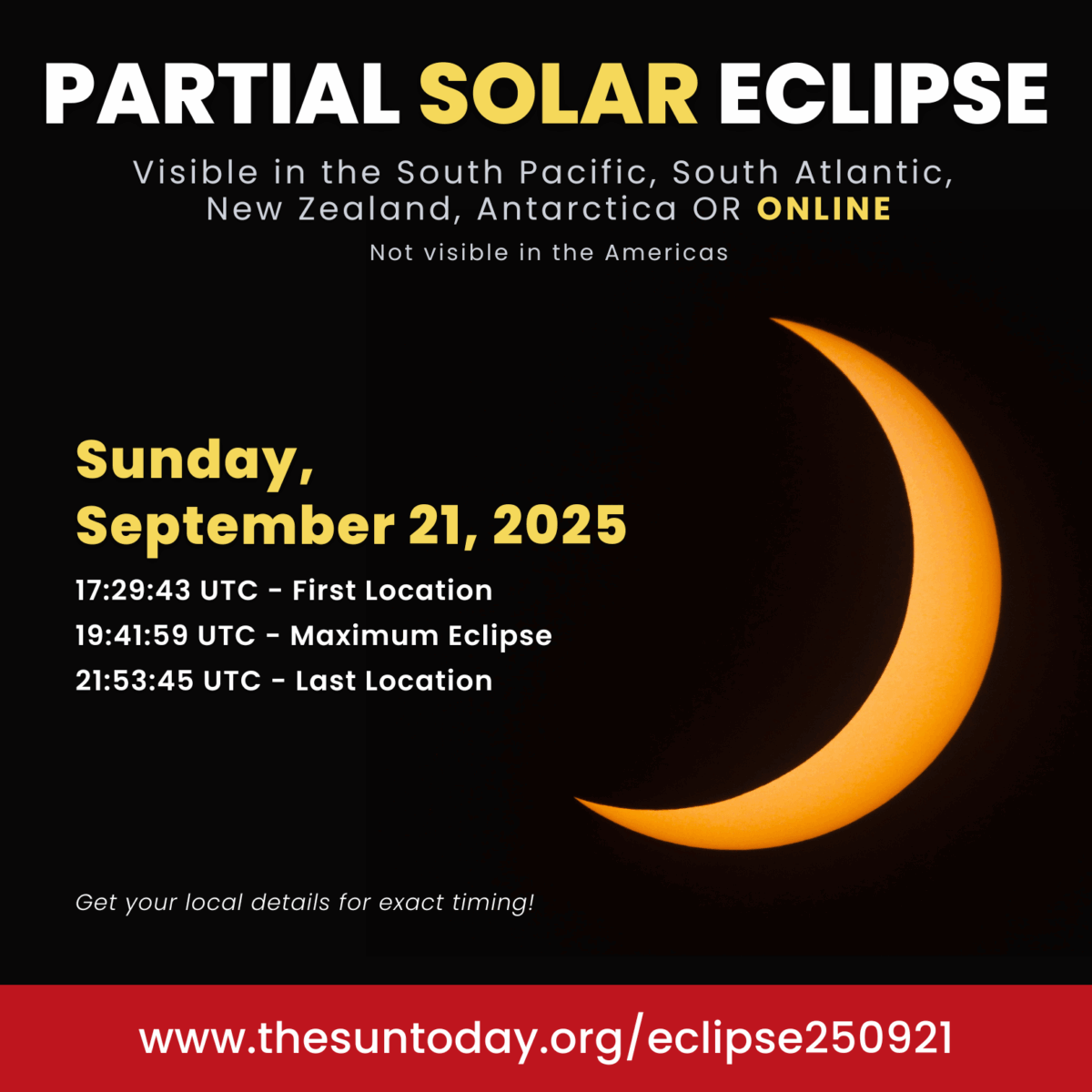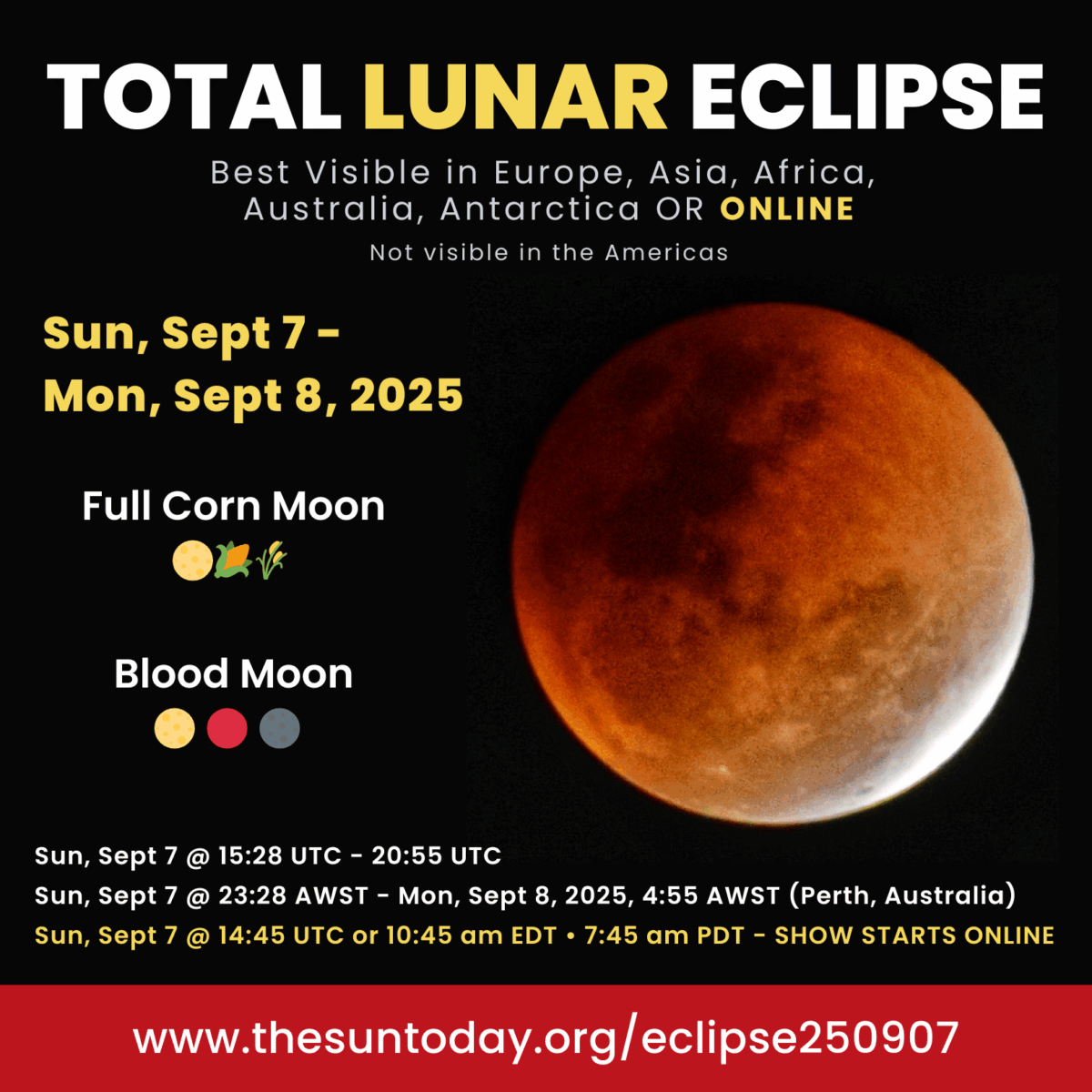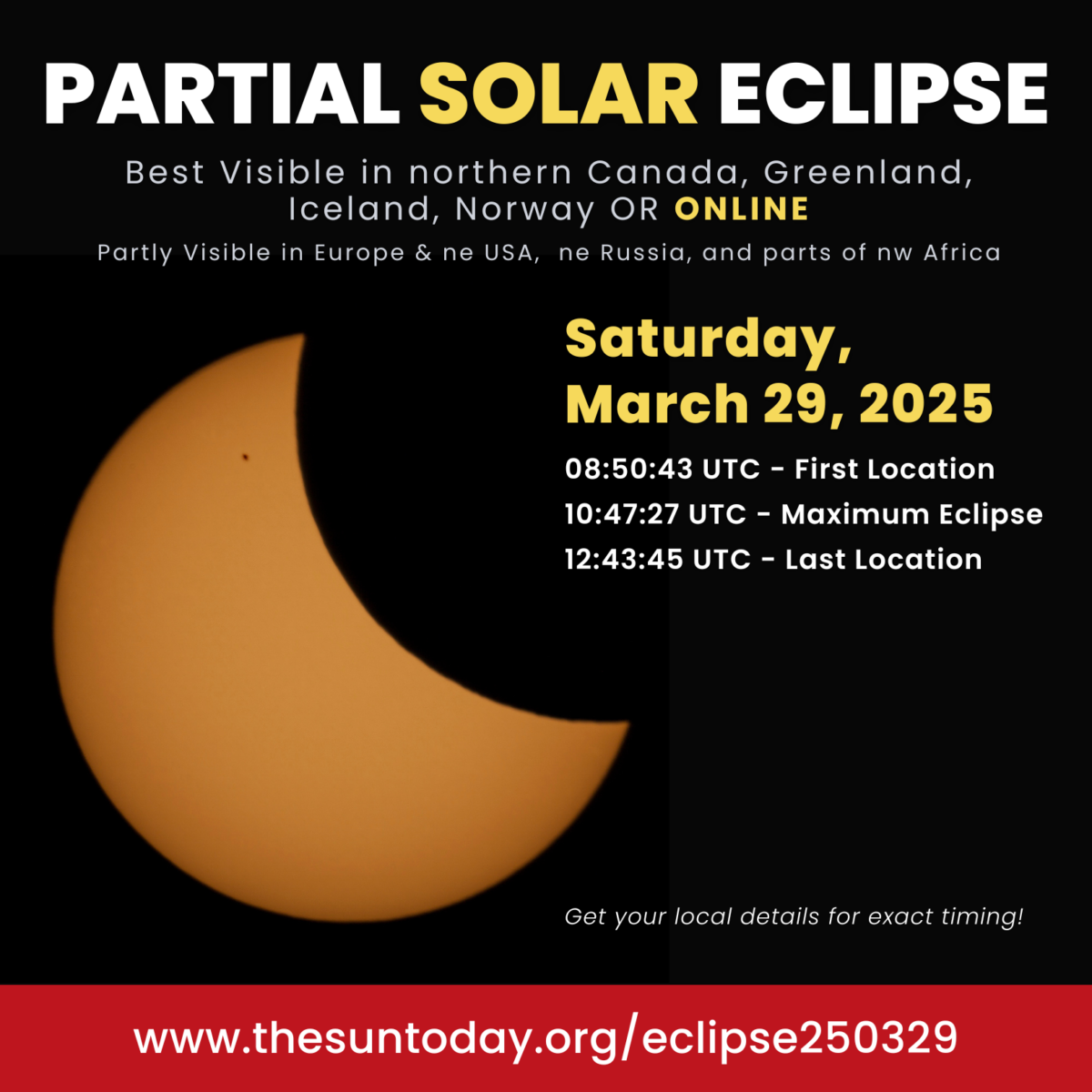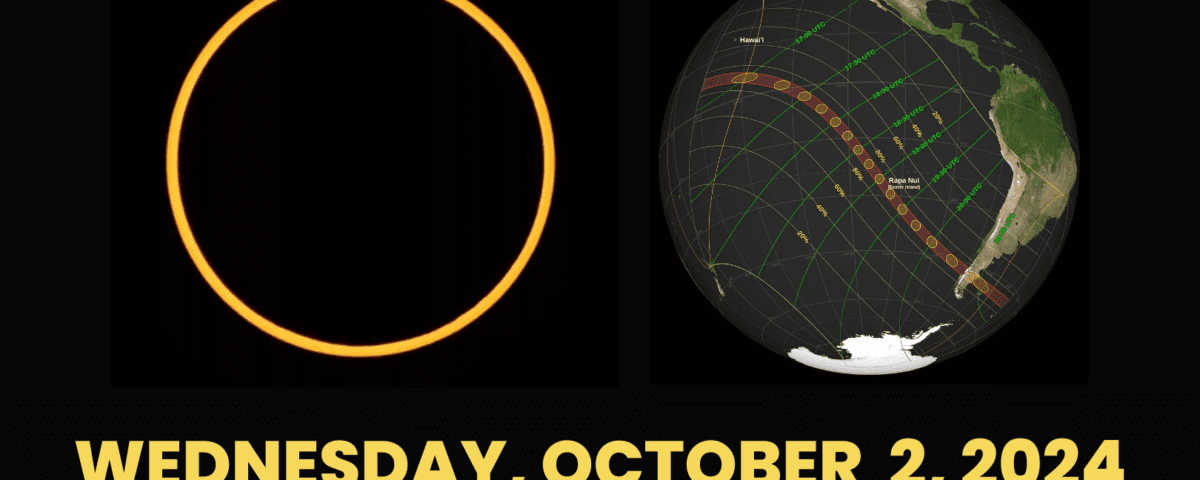
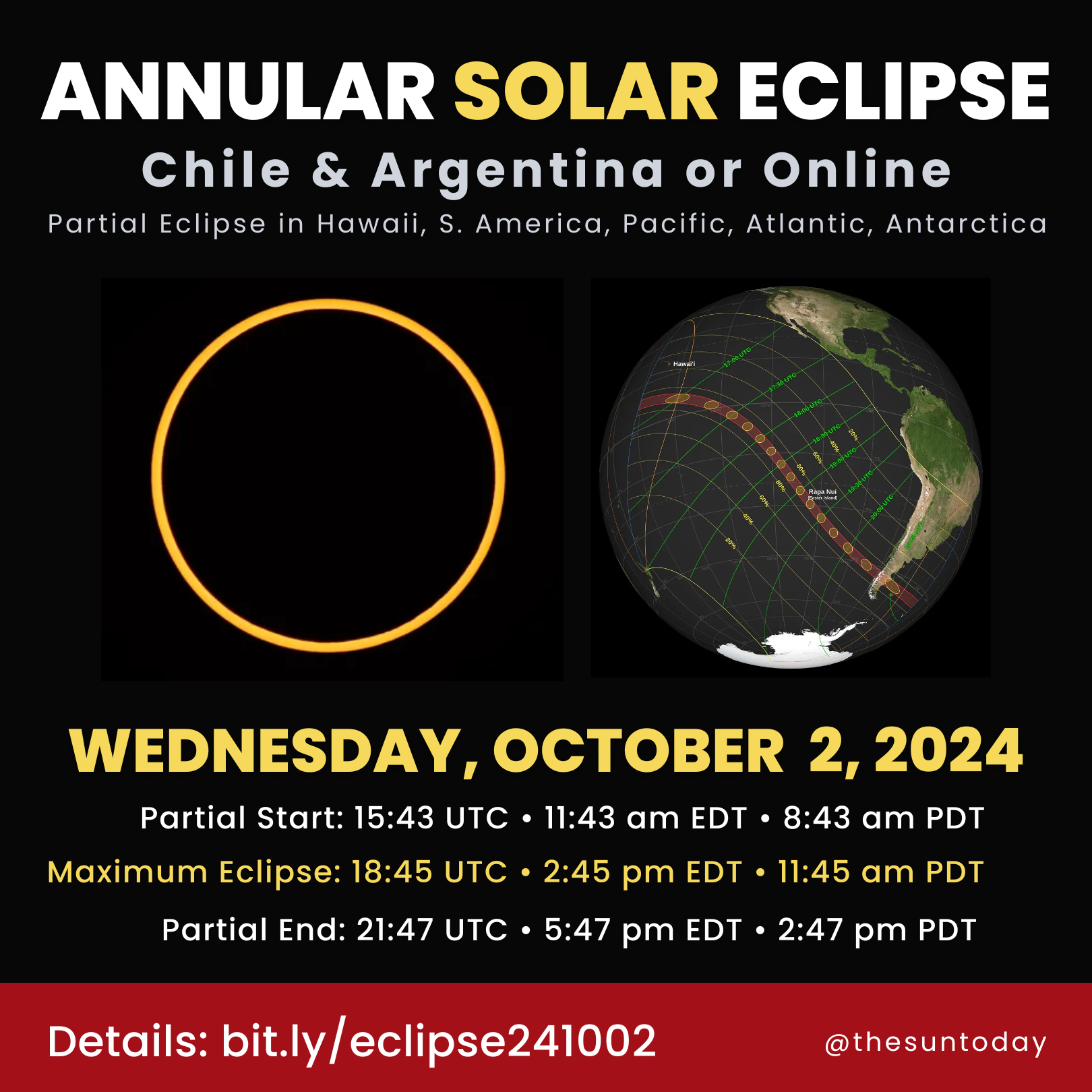
October 2, 2024, is another chance to view an annular solar eclipse, also known as a “ring of fire”. You can view the eclipse online:
The “Ring of Fire” Eclipse 🌞 🌑 🌎
A solar eclipse happens when the Moon moves between the Sun and Earth, casting a shadow on Earth, fully or partially blocking the Sun’s light in some areas.
An annular solar eclipse, AKA a “Ring of Fire” eclipse, they occur when the Moon’s apparent diameter is smaller than the Sun’s, blocking most of the Sun’s light and causing the Sun to look like an annulus (ring).
Because the moon is farther away from Earth, it seems smaller and does not block the entire view of the sun. When the Moon comes just shy of completely blocking out the Sun a bright ring or annulus is visible. This is a special kind of partial eclipse, an annular eclipse.
During an annular eclipse, the Moon is far enough away from Earth that the Moon appears smaller than the Sun in the sky. Since the Moon does not block the entire view of the Sun, it will look like a dark disk on top of a larger, bright disk. This creates what looks like a ring of fire around the Moon.

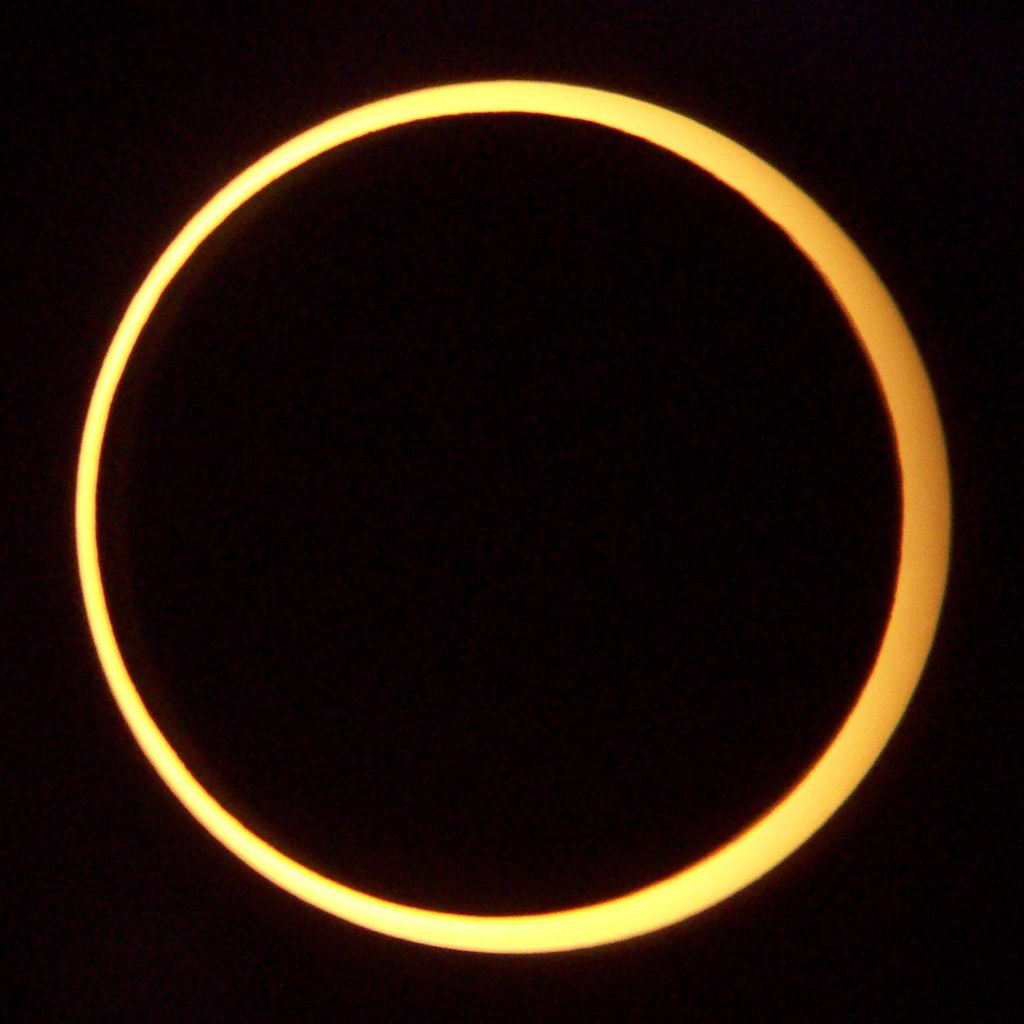
Annular Solar Eclipse – Credit: Smrgeog – Own work, CC BY-SA 3.0

Eclipse photos: A 5-part image showing the stages of the eclipse, from a small partial to a total ring around the sun.
CREDIT: Raul Cortes, Corpus Christi, TX – Oct-14-2023
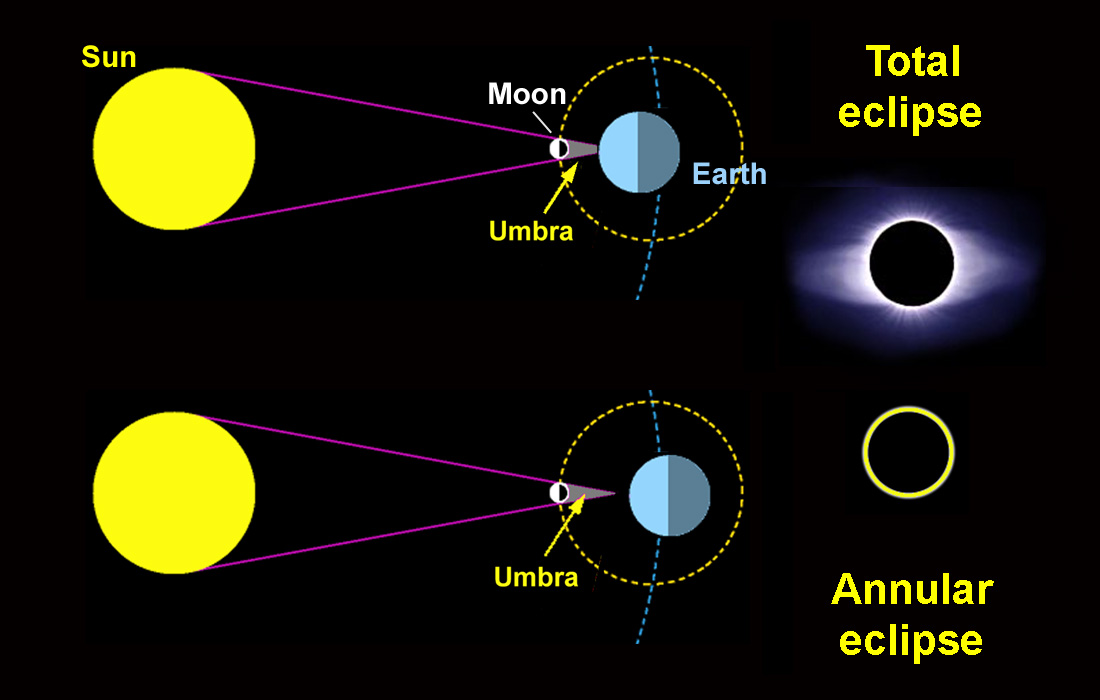

Diagram Credit: Rice Space Institute
If you are lucky enough to be on a narrow path over Chile, Argentina, Easter Island, or the Pacific Ocean, you can see the annular solar eclipse live.
Those in Hawaii, Antarctica, parts of South America, the Pacific Ocean, and the Atlantic may enjoy a partial eclipse. Most importantly, no matter where you are on the eclipse path, you must always use proper eclipse-viewing protection.
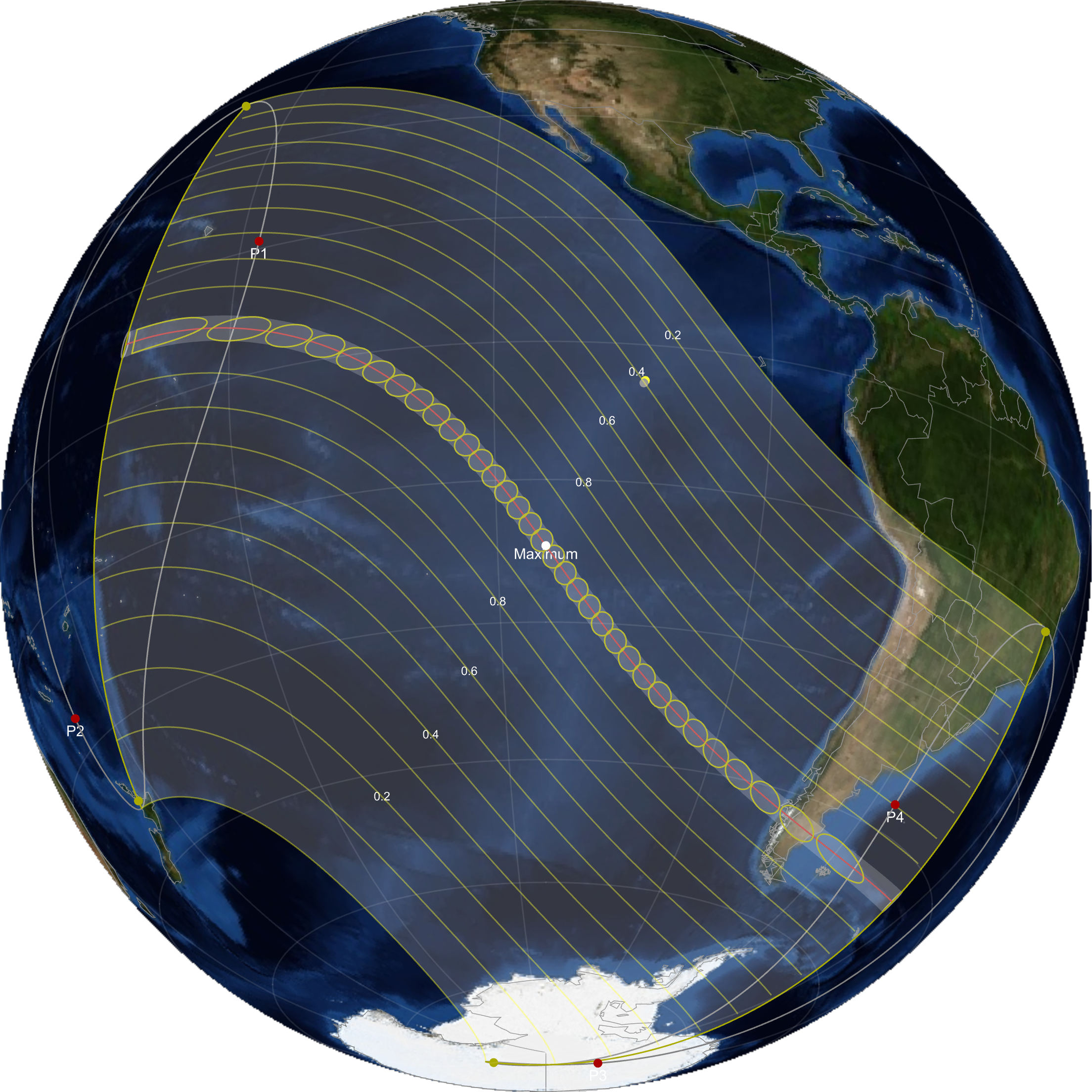
This is a globe projection map of the penumbra and antumbra passing across Earth. The points P1-P4 are the 4 contact points of the penumbra. The yellow curves on either side show the sunrise and sunset lines. The line of 0.2 to 0.8 show the areas where the partial eclipse shows 20% to 80% of the moon covered. The line of circles in the middle are the areas where the full annular eclipse is visible where the antumbra passes across Earth. The maximum point of annularity is denoted with the white point (Maximum). This map was created by The Sun Today but a similar map with more detail can be found at the NASA SVS, https://svs.gsfc.nasa.gov/5378.
For those in these locations, the eclipse comes at:
| Eclipse Stages Worldwide | UTC Time | EDT Time |
|---|---|---|
| First location to see the partial eclipse begin | Oct 2 at 15:42:59 | Oct 2 at 11:42:59 am |
| First location to see the full eclipse begin | Oct 2 at 16:50:38 | Oct 2 at 12:50:38 pm |
| Maximum Eclipse | Oct 2 at 18:45:04 | Oct 2 at 2:45:04 pm |
| Last location to see the full eclipse end | Oct 2 at 20:39:15 | Oct 2 at 4:39:15 pm |
| Last location to see the partial eclipse end | Oct 2 at 21:47:00 | Oct 2 at 5:47:00 pm |
You can use the interactive maps at timeanddate.com to find specific information based on your location. But if you cannot view the eclipse in person, the internet’s magic allows live streams to enjoy the eclipse.
The EarthSky post on the eclipse by Mr. Eclipse, Fred Espenak, provides an excellent discussion of the details of the eclipse and the movement of the moon’s shadow crossing Earth. NASA does provide a non-exhaustive list of the areas that will experience the annular and partial eclipse.
This eclipse is the second eclipse of the second eclipse season of 2024.
The first eclipse of this September-October season was the partial lunar eclipse of September 17-18, 2024. The two eclipses in the first eclipse season of 2024 were the penumbral lunar eclipse of March 24-25, 2024, and the total solar eclipse of April 8, 2024.


